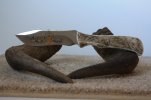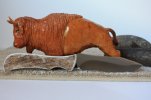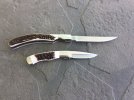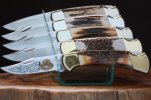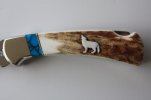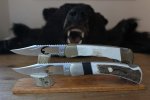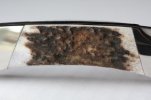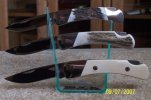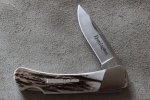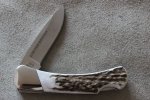I can't post a pic right now but I just got a B&C LE elk scaled Teddy R special Ergo Hunter. Fabulous knife. My question is are all elk scales natural on the surface or are they sometimes jigged to look natural. The elk is so uniform in texture and color over the entire length it makes me wonder if it's jigged. The Ergo Hunter has a pretty good sized handle to have such uniform elk scales.
Not complaining, just curious. I'm happy to own it.
Pete
Not complaining, just curious. I'm happy to own it.
Pete

